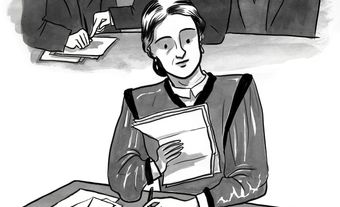The Quebec Resolutions are a list of 72 policy points. They formed the basis of Canada’s Constitution. They emerged from the Charlottetown Conference and the Quebec Conference in the fall of 1864. Those meetings were held by leaders from the five British North American colonies. They worked out the details of how they would unite into a single country. (See Confederation.) The Quebec Resolutions were finalized at the London Conference in 1867. They formed the basis of the British North America Act (now called the Constitution Act, 1867). It was the first building block of Canada’s Constitution. It created the Dominion of Canada on 1 July 1867.
This article is a plain-language summary of the Quebec Resolutions. If you would like to read about this topic in more depth, please see our full-length entry: Quebec Resolutions.

Drafting A Constitution
The Quebec Conference ended on 27 October 1864. The decisions made there formed 72 Resolutions. Fifty of them were crafted by John A. Macdonald. He was one of the few delegates with legal and constitutional training.
Overview of the Resolutions
One of the main questions was how powers would be divided. (See Distribution of Powers.) Powers would be split between a central Parliament and provincial legislatures. The interests of regions and minorities would be defended. The provinces would have control over education and language, among other things. The federal government’s powers would include control over money, international trade and criminal law. Some areas, such as immigration, would be shared. Both levels of government could raise taxes.
It was decided that Parliament would have two houses. Members of the lower house, or House of Commons, would be elected. The seats would be based on population. (See Rep by Pop [Plain-Language Summary].) Ontario would have 82 seats. Quebec would have 65 seats. Nova Scotia would have 19. And New Brunswick would have 15. (PEI did not join Confederation until 1873. Newfoundland did not join until 1949.)
Members of the upper house, or Senate, would be appointed. Each region would have an equal number of senate seats. This was meant to protect regional interests. Each of the three regions would have 24 senate seats. The three regions were Ontario, Quebec and the three Maritime provinces.
It was decided that Ottawa would be the nation’s capital. It was also decided that the Crown would remain the head of state.
and that the Crown, or the “Sovereign of the United Kingdom,” would remain the head of government and the keeper of “executive authority.” A provision was also made for other regions. They included Newfoundland, British Columbia and the “North-West Territory” (then called Rupert's Land). They could enter Confederation “on equitable terms” at a later time.
It was agreed that the new federal government would help fund and finish the Intercolonial Railway. It ran from Quebec City to the Maritimes. This was a key condition for the Maritimes’ entry into Confederation.
Significance
The resolutions were debated in the various legislatures in the years to come. They went on to form the basis of Canada’s Constitution. In 1866 and 1867, they were turned into a bill at the London Conference. It was the final meeting in the Confederation process. That bill became the British North America Act (now called the Constitution Act, 1867). It created the Dominion of Canada. It was passed by the British Parliament and became law on 1 July 1867. (See Canada Day.)
The 72 Quebec Resolutions
For the full list of the 72 Resolutions, see Quebec Resolutions.
See also Charlottetown Conference (Plain-Language Summary); Quebec Conference (Plain-Language Summary); London Conference (Plain-Language Summary); Confederation (Plain-Language Summary).

 Share on Facebook
Share on Facebook Share on X
Share on X Share by Email
Share by Email Share on Google Classroom
Share on Google Classroom






